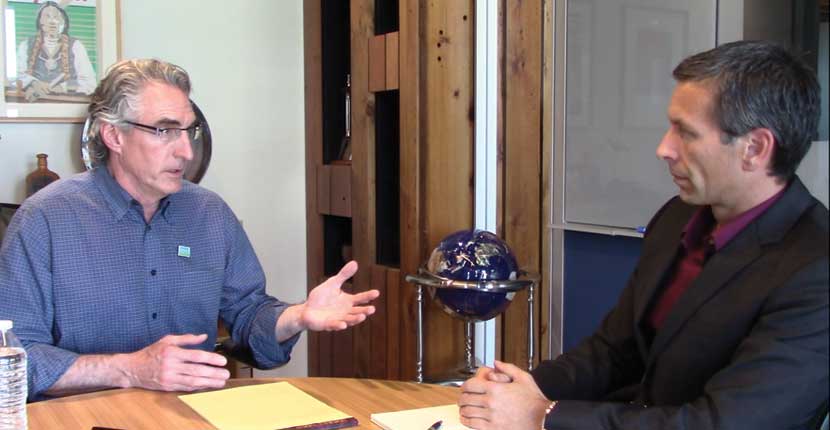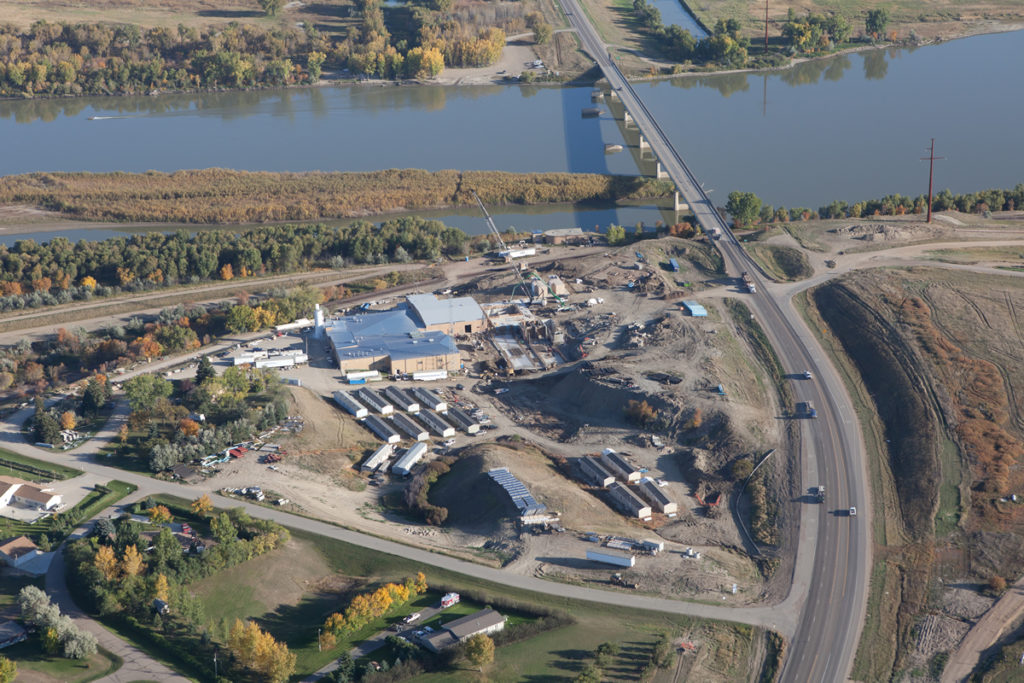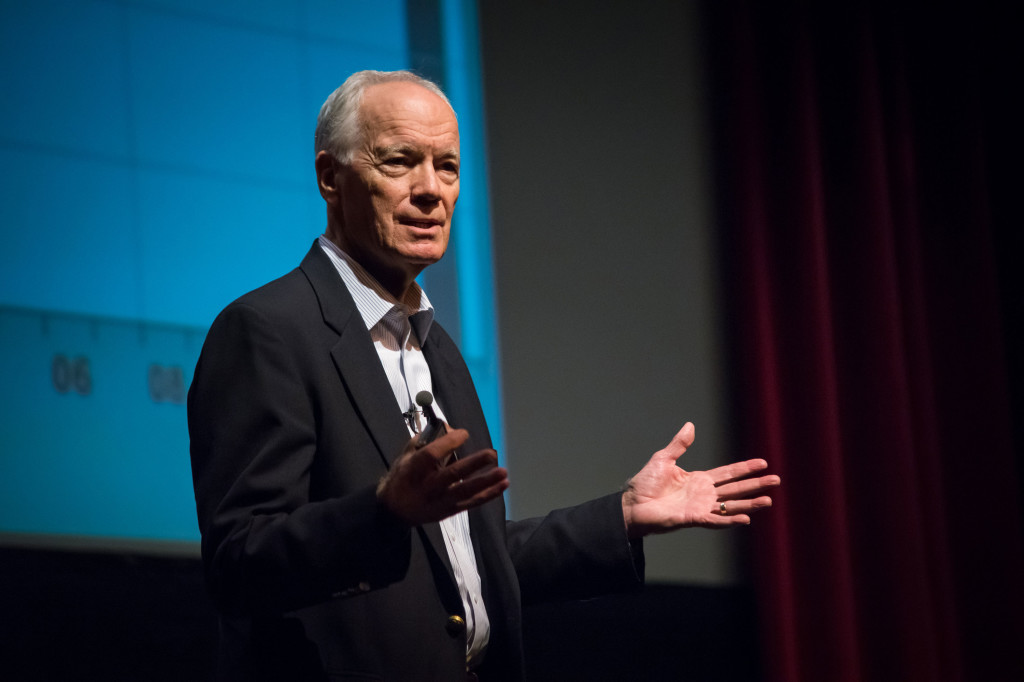
This is part five of a five part series “The North Dakota Western Water Wars”.
This piece is the final installment of a five part series on the anomalous water industry found in the Bakken oil fields in western North Dakota. Originally this installment was going to focus on what is next for the private water industry and the state-owned water political subdivision known as WAWSA, which is short for the Western Area Water Supply Authority. But after getting a better handle on the issue, it is clear true leadership and humane action is needed in the state’s water industry right now.
The first four installments focused on the private water industry, WAWSA, landowners, engineering costs, tax dollars and debatable decisions made by the state legislature. Those articles were from a journalistic structure, layering facts on top of quotes in order to tell a story. They were not opinion pieces or one-sided commentary, rather old school journalism.
This installment will not be that. It will much more casual with the grammar and direct with the tone. Call it a hybrid of commentary and journalism.
Here are links to the other four parts of The North Dakota Western Water Wars series:
Like I said earlier, my goal was to focus on what’s next, interview professionals and report it. But after interviewing nearly 20 people for this five-part Water Wars series, it became apparent that the leadership from the state of North Dakota is the story. Their lack of vision and decisions have created one of the largest boondoggles in North Dakota history.
I feel extremely confident using a sensational word like “boondoggle” since the project has surpassed the triple mark and still has no end in sight. What was originally a $150M dollar project is now $465M and counting.
In addition to orchestrating a near half-a-billion-dollar mess for the taxpayers and private industry, the state has created one of the most controversial issues in the state. That’s another major part of the story. How the state has fostered and allowed a modern day Hatfield and McCoy situation, only instead of guns, they use attorneys, media outlets, linguistic trickery and state-sponsored muscle.
Now, I have won multiple national newspaper and radio awards. I do not say this to brag, rather point out that those awards are a result of tremendous teams working on spectacular stories. The story of the water industry in western North Dakota is at that level. This story truly is unbelievable in its literal sense.
This issue has gotten to the point to where it is setting a precedent of what role a government has in the public and private sector. Should elected officials be using tax dollars to start state-sponsored businesses to fund their projects? These are just a couple examples of why I believe this issue needs true leadership and humane action from North Dakota Governor Doug Burgum.
In addition to being the governor, he is on the state industrial commission, is the water commission chairman and chairman of the Bank of North Dakota. This is relevant because the industrial commission/water commission has some oversight with WAWSA and the Bank of ND hold $164M of WAWSA’s debt. Burgum can influence with power in a variety of ways to get something resolved.

In short, Burgum should address the Water Wars in western North Dakota immediately. The shear amount of taxpayer dollars at stake, choices made by the public officials and the amount state money to private businesses has created pillars in an ecosystem of money, cronyism and politics. All at the expense of the taxpayer.
I spoke to Lt. Gov Brent Sanford for about 90 minutes about the WAWSA project. Sanford and I have worked together on a number of stories and interviews over the past five years and I hold him in high regard. But after talking with him and knowing how involved he was with WAWSA from the start, I had to quasi-disqualify him from this final installment.
Not to mention he may not fully appreciate or understand the need to apply a statewide public policy metrics in reviewing WAWSA and discard his local loyalty for the project that no longer reflects the position to which he has been elected.
For Burgum, however, he is still somewhat fresh to the Water Wars debacle. And this issue could become an example of his administration reinventing government. Right now, the current method of government is losing money in the highly competitive water business with a finance model tied to the volatile oil industry. More on that in a moment.
Another reason the Water Wars in western North Dakota warrants the attention from the governor is the way the business model is set up. Over the past six years, the state legislature has spent countless hours and resources dealing with WAWSA. Here’s a quick list of some bills the state legislature, lobbyists, private businesses and others have been dealing with.
2013
HB 1398: Dealt with a Water Tax and failed.
SB 2359: Involved Industrial Use restrictions. Passed in the Senate, then failed in House.
SB 2373: Gave control of WAWS to the Water Commission. Passed in the Senate, then failed in the House.
SB 2233: Bill “required Water Commission approval” of industrial supply, which passed.
2015
SB 2336: Water Commission approval of industrial water supply (implement SB 2233), which Passed Senate; Failed in House.
SB 2361: Attempted to create a limit on WAWS’ use of eminent domain. Passed in the Senate, then failed in House.
2017
HB 1020: Attempted amendment to add a private industry water tax. Passed in the House, then failed in the Senate. Both WAWSA and the private water industry were publically against HB 1020.
Each session and bill drains tax dollars and resources from everyone involved due to a unique one-of-a-kind business model crafted by a group of elected officials and select private businesses.

Public Officials, Private Conflicts
The lack of response from the public officials has been amazing. In 20 years of interviewing government officials, I have never experience anything like it. As I said earlier, the public officials are a major part of the Water Wars story.
Some public officials blindly defended the state and WAWSA’ tactics with ambiguous talking points, legislative policy and attempts to control the conversation. Then there was the ones who asked to talk off record citing bills and suggesting places to look at public records.
This level of dealing with public officials is normal. It was the next level that raised my concern level.
The next level dealt with prominent government contacts asking to sit this one out. State officials who have given me their personal cell numbers due to years of trust and respect. I have done interviews with these officials while they were in airport terminals, restaurants and even while they were on vacation. The Water Wars story was different. It appeared as if the issue was bigger than them and they were stuck between a political rock and a hard place.
Then there was the “ghosting” level of government officials. Ghosting is a term used when someone just ends communication and disappears regarding a topic. For example, when I do a story on oil and gas, drones or economic development there is no issue getting an interview locked down with a public official, local or state. Mention WAWSA and they suddenly disappear. After arranging an interview with State Treasurer Kelly Schmidt through her communications office, she actually hung up the phone seconds after I spoke the word “WAWSA”.
She said. “I’ll have to call you back” and hung up the phone. I never heard from her or her communications office again. To be fair, Schmidt doesn’t have anything to do with WAWSA, but her reaction once again validated how much Bismarck had been infused with a walking on eggshells approach to WAWSA.
Even North Dakota Bank president Eric Hardmeyer declined to interview on WAWSA citing constitutional code. Walls after walls after walls.
Then there is the level I never got to. Which private companies and people are giving money to which politician.
So many of the politicians who went on the record in favor of WAWSA became fixated on generalized talking points to complex questions. It was like each topic was a silo on a farm and could only hold so much information. Information that was beneficial to them and their limited point of view. It was obvious many entered a plane with an inability to see outside their self-manufactured tunnel vision.
Then there are all the conflict of interests and questionable decisions involving industry.
For example, engineering firm AE2S and Vogel Law Firm participated and had influence with the water study that got this whole project rolling. Then those two firms became the primary beneficiaries of project, and still are today.
In AE2S’s case, they were the only firm that bid on the major million dollar project. And in the state’s case, they approved a risky multi-million dollar project with only one engineering firm bidding. If this is how government operates, Burgum needs to reinvent sooner rather than later in the world of how multi-million dollar bids are accepted in the state of North Dakota.
Furthermore, the engineering costs have produced layers of intrigue. After the sticker shock of paying $48M in engineering fees thus far, questions quickly arise. Like “how” and “why” for example. After being denied an interview by AE2S’s communication department, I had to rely on the public officials who have spoke on AE2S’s behalf as to why the project has more than tripled in cost.
Speed and Rapid Growth
One popular answer is the speed and population increases due to the Bakken. Those reasons not only lack vision, but are controlled by greed.
The decision to tie the finances to competing in the oil and gas industry is unbelievable. Literally unbelievable. According to energy expert Dr. Loren Scott trying to forecast and predict the oil industry is nearly impossible. Not to mention the 1990’s we saw a nearly a decade of low oil prices, which spilled over into the 2000’s.
Scott has been creating impact studies, forecasting services, analysis of policy proposals, and general economic analyses, consulting with clients like BP, ExxonMobil, Entergy Corporation, J. P. Morgan Chase, Capital One Financial, Nucor, Sasol, and a diversity of others.
In addition, Scott has been appointed to the Economic Advisory Board of the U.S. Council on Competitiveness, a group made up of the CEOs of the Fortune 100, top university presidents, and presidents of three major unions. In addition to his consulting business he is presently Professor Emeritus of Economics at LSU.
“I taught forecasting for 30 year to MBAs and executive MBAs, and I told them oil prices where the second toughest thing in the economy to forecast,” Scott said. “That’s because two-thirds of the oil reserves in the world are under the lands of countries where the government is running the oil operations. And you never know what those countries are going to do.”
However, the easiest thing to understand about the oil and gas industry is that it is unpredictable by nature and profitable by design.
“People that work in the shale plays typically borrow money in order to to their drilling. They are not operating off their own income,” Scott said. “The more uncertain the price of oil remains, and the more they have meetings that turn out to be unproductive, the more reluctant the lenders are going to be to give money to the shale people to go back out.”
The modern day shale plays are completely different than the traditional oil plays, but, the core of the oil and gas industry has not changed at all. According to Scott, the oil and gas industry will always become more efficient with their bottom line and geographical footprint.
“Like the other shale plays, the Bakken is showing the cleverness and ingenuity of the American capitalists,” Scott said. “The breakeven point has dropped from around $60 or $70 to now into the $30’s and $40’s.”

The ability for oil companies to work with their partners and suppliers has allowed drilling to happen at $45-a-barrel in the Bakken, whereas five years ago that wouldn’t have been the case.
“They are figuring out how to get more and more oil out of the shale once they frac it. Drilling time has dropped sometimes as many as 21 days down to seven-and-a-half, I mean they are just really quick people in this industry,” Scott said. “And when they are under pressure with lower oil prices they figure out a way to get more oil out of the ground and get more oil out a lot cheaper. That’s why the breakeven point keeps falling in all of these shale plays. They are just clever, clever people.”
The Bakken Boom
But this boom was going to be different, right? Words like “technology”, “horizontal drilling” and “fracking” were used to tell the story of a new age in oil. The new age in oil was going to last 20-30 years and we were going to be drilling the entire time. Even former North Dakota governor Ed Schafer was shouting the merits of the Bakken boom from roof tops.
While Schafer’s dominant vibe towards the Bakken was positive, he was right with much of his analysis and predictions about the oil and gas industry and the state. Including the less than popular predictions involving state budgets and low oil prices.
“One of my concerns in all of this (The Bakken play), is we (North Dakota) have built such a dependence on revenue from the oil industry,” Schafer told me in a November 2013 interview.
He also explained how the state’s interpretation of water industry involvement is a perfect example of how leadership is taking North Dakota down a dangerous and expensive path.
“The legislature’s efforts are to solve problem. Sometimes when you have a surplus, legislatures and governors will say ‘let’s solve the problem with tax money,” Schafer continued. “But instead of encouraging the private sector we put tax dollars in, and one of the perfect examples of where I think North Dakota is making a mistake and competing with the private sector is in the water delivery.”
Schafer was speaking specifically about WAWSA. He pointed out, back in the November 2013 interview, that the WAWSA structure and model would use grants, tax relief, government resources and other state advantages to capture a portion of the water market and could potentially turn into a monopoly in the Bakken.

“When a community can build a water supply project for one third of the price of the private sector, the go in and compete against them too, well that just isn’t right,” Schafer said. “We have to be careful in North Dakota when we have enough money so where legislators don’t use government solutions to continually solve problems instead of encouraging the private sector. Our country and state were built on private sector investments with government encouragement.”
Also in the November 2013 interview, Schafer and I discussed what North Dakota would look like if oil prices dropped and remained low for a number of years. At the time of the interview, the Bakken was still at bonkers level, but signs of decline were present.
“I just think we need to be careful here,” Schafer said. “We have higher costs than many states and we have to stay competitive. Oil companies are going to extract where it is the most cost effective.”
This is important because the oil industry has not busted in North Dakota. In fact it has become an industry. It has become streamlined, efficient and wired. An industry based on the price of a commodity, not the success of wildcatting wells. Today, oil and gas is just like farming or mining.
In fact, North Dakota has continued to produce nearly one million barrels a day for the past three years, despite low oil prices. This has happened due to technology, innovation and a bunch of smart capitalists.
Disrupters in the Economy
One of the most puzzling aspects of the state’s decision to develop WAWSA the way they did, is because of the number of disrupters in the state’s economy, population and technology.
For example, in the media industry was hit with a major disrupter called the Internet. Media companies are still trying to recoup their online investments. Hydraulic fracturing and horizontal drilling changed the way oil and gas does business. So has remote monitoring and sensors. Then there is just plain old technology in administrative areas.
We currently live in a time when technology is changing every industry in some way. Layering innovations and applications over industries impacts everything from city population to government revenues to other projections based on the health of industry.
There are companies, like San Antonio’s Liberty Oil, for example, who have fracked remotely. Frac crews in San Antonio show up to work at a San Antonio office while a reduced on-site crew handles the harvesting operations in North Dakota. If this trends continues or is streamlined in, it could ripple into many Bakken towns affecting population numbers.
Also over the past several years, while North Dakota was still producing one-million-barrels of oil a day, WAWSA’ sales and finances have created enough issues to warrant changes to their loan and payment structure. This combined with increased costs show signs that another kerfuffle is brewing.
Defending the $469M WAWSA project with rapid population increases illustrates the danger of government impulse of trying to solve a perceived problem.
Burgum is very familiar with the term and idea of “disrupters” in an economy, population or industry, he often spoke about the phenomenon – “disruptive technologies” – during his 2016 gubernatorial campaign.
Population
Since 2011, NDSU has revised the Bakken’s population numbers multiple times. And the latest effort is suggesting less future growth than previous estimates. According to research scientist Dean Bangsund, NDSU, people should pay attention to a trend of smaller future growth rates.
“Over the past six years there has been at least one set of revised population numbers every year,” Bangsund said. “One of the reasons we have done so many is that we are continually adjusting our modelling processes for projecting population in western North Dakota. There wasn’t a consensus on how large the industry would become which made it difficult to project a population when everything is constantly changing.”
Bangsund continued stating traditional models wouldn’t work for western North Dakota over much of the last six years. The scale of growth in the oil and gas industry and the complexities of shale development was unlike anything the state has seen.

“Shale represented a different process than conventional oil,” Bangsund said. “No one knew how innovation would impact employee numbers or their locations. We were still trying to understand workforce residencies and infrastructure challenges.”
He added that just because the latest population forecasts for the Bakken are lower than previous studies, it doesn’t mean those areas won’t increase in size, just not as fast as some thought and perhaps not as large as previously thought.
“It doesn’t mean we aren’t going to grow, it doesn’t mean we can’t grow, the population numbers are just tapered down a bit,” Bangsund said.
The Downside of Technology
To some, energy tech can can have a flip side to the innovation coin. In some circles there is even a phrased coined to illustrate how much technology has impacted the energy industry – the downside of technology.
This phrase is meant to summarize all the rig related jobs that have been replaced by a robot and how technology has allowed a quicker completion time. Scott disagrees with the “downside of technology” and continues to see it as a boon for the industry.
“We’ve had technological changes going on for centuries, as a matter of fact it has gotten exponential and yet we have not had a problem with total employment,” Scott said. “If anything the oil and gas companies have been having a hard time finding people.”
Scott added that one of the ways companies are saving money is reducing the labor costs.
“In some places the rig floors out in the newer rigs in the Gulf of Mexico are almost totally mechanized. You don’t have really have roughnecks putting slips in to catch the pipe and so forth. It is getting more and more robotic,” Scott explained.
With the advent of robotics and new technologies, Scott sees the job offerings in oil and gas evolving beyond the traditional roughneck type jobs.
“There is still jobs for people to do besides being a roughneck on a rig,” Scott said. “People have to build the robots, run the robots and learn how to do all that so I am not to worried about the ‘downside of technology’.”
He also addressed how technology has been creating more efficient fracs and well extraction too.
“I remember when I started talking to people in the Bakken, back in 2007, a typical well would get 100-barrels a day in the first year, now they are getting 1,100-to-1,200-barrels a day,” Scott said. “They are just getting smarter and smarter about harvesting the fields.”
Pointing Fingers
One thing I have learned in this, don’t blame WAWSA or their staff. I have talked to executive director Jaret Wirtz, he’s a decent enough guy, but has been put in a controversial position from the start. His direction comes from the state and board of directors.
There were many people in this Water Wars series that blamed WAWSA, when in reality they were blaming the state, only using WAWSA’s name. That’s politicians playing one-step-ahead politics so they are not blamed for their choices or actions.
No blame should be placed towards the private water industry either. They are taking on Goliath (the state) on an uneven playing field. They are doing the best they can in an environment where the rules can change quickly and drastically.
If you are going to focus the attention on anyone, it should be the ND legislators who pushed this water project through. They did not have enough foresight to understand the complexity of this project nor the influence to stop the debt from being levied upon their constituents.
Honestly, if you boil it down, the state gambled in the speculative oil industry with taxpayer money.
First the elected officials said no one saw this oil boom coming. Then it shifted to no one saw the price of oil dropping. Now the line is that no one saw the rigs getting this efficient. Three poignant examples of leadership without vision. It is time someone with some real leadership qualities to step up.
Governor Burgum needs to address the Water Wars issue before this boondoggle becomes a double boondoggle and someone ends up attempting a double boondoggle dare with your tax money.


Leave a Reply